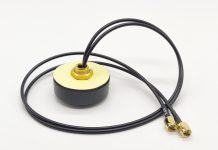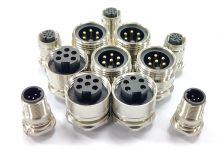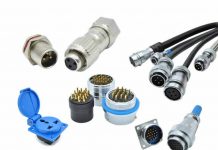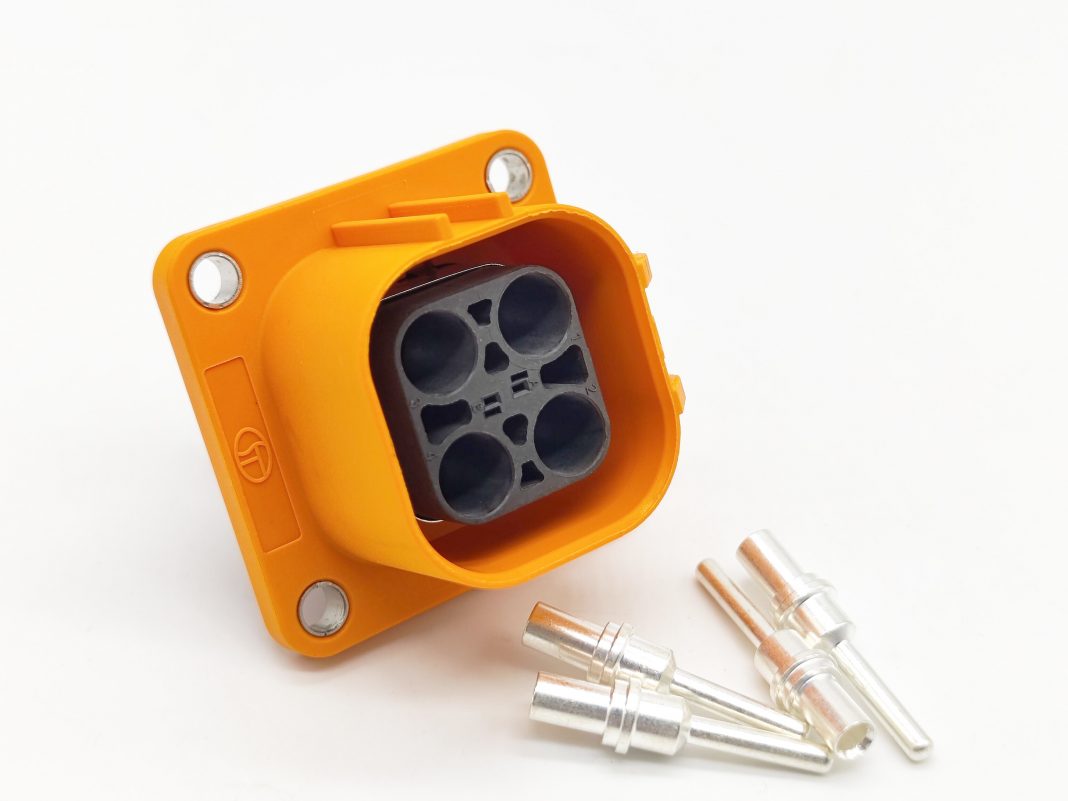New energy vehicles have become a hot topic now. Whether it is a pure electric vehicle or a hybrid vehicle, a complete set of high-voltage connection system is required. In a complete high-voltage connection system, a large number of high-voltage connectors are often used, which is the obvious difference between low-voltage connectors used in new energy vehicles and traditional automobiles.
When the high-voltage system is working, the discharge current reaches tens of amps, or even as high as hundreds of amps. Once the high-voltage connector has a problem, it will be overheated in light, and high temperature or combustion accident will occur in severe cases. Unlike traditional automotive low-voltage wiring that focuses on batteries, electric drives, and electronic controls, the physical properties of high-voltage connectors in high-voltage systems on new energy vehicles, electrical performance is more important, such as high plugging times, current carrying, heat resistance , Sealed waterproof and anti-vibration, etc.

What are the key technologies of high-voltage connectors that are widely used in the automotive industry?
Temperature rise and derating curve of high voltage connector
The temperature rise of high-voltage connectors is affected by a variety of conditions.
Physical environment heating: Since the materials used in the connector are engineering plastics, metal, rubber, etc. (especially engineering plastics require a maximum working temperature of 140°C), when the connector is in a high temperature environment for a long time, the high-voltage connector will heat up due to its own contact internal resistance. Achieving thermal equilibrium, plus the ambient temperature is higher than the material’s maximum allowable operating temperature. At this time, if the internal pinhole parts of the connector heat up and the internal temperature cannot be dissipated in time, the connector will generate a lot of heat, resulting in ablation of the connector and causing the vehicle to burn. Therefore, the selection of high-voltage connector materials needs to be considered in the design.
Connection of the board end: In the case of screw connection of conductive parts, one of the main failure modes is that the tightening torque is not controlled according to the torque requirements, resulting in abnormal temperature rise of the connector part. Therefore, at the same time, the torque test must be carried out according to the operating specifications when the bolt is connected.
In addition, the high-voltage connector will have a derating curve, which gives different values corresponding to different currents under different working ambient temperatures. Selecting the appropriate connector according to the working conditions is also an effective way to avoid abnormal temperature rise.
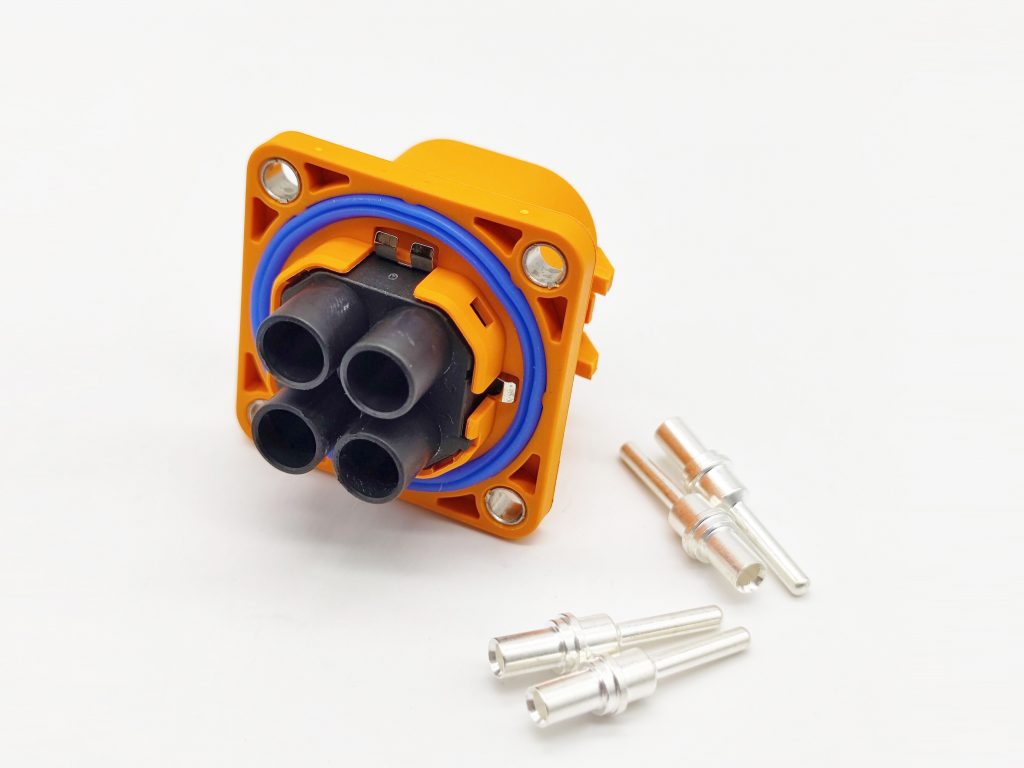
High Voltage Connector High Voltage Interlock (HVIL) and Secondary Unlock
High-voltage interlocking is a safe design method for managing high-voltage circuits with low-voltage signals. In the design of high-voltage systems, in order to avoid arcing caused by the live disconnection and closing of high-voltage connectors during actual operation, high-voltage connectors should generally have a “high-voltage interlock” function.
Connectors with high-voltage interlocks can be disconnected by the logic sequence of the high-voltage interlocks when unlocked under live conditions. When the high voltage connection system is connected, the power terminal is connected first, and then the interlock terminal is connected; when the high voltage connection system is disconnected, the interlock terminal is disconnected first, and the power terminal is disconnected later. Under normal circumstances, the response time of the system to the interlock terminal loop is between 10 and 100ms. When the connection system separation time is less than the system response time, there will be a safety risk of live plugging and unplugging.
The purpose of secondary unlocking is to solve the problem of disconnection time. Generally speaking, secondary unlocking can effectively control the disconnection time to more than 1s to ensure safe operation. There are two ways to unlock the second time. One is through the operation sequence. It is realized in the opposite or different direction from the normal pulling out. When the connector is pulled out, the power-assisted wrench is in the opposite direction to the separation direction or not in the same direction. to increase the response time when unplugging. The other is the mechanical secondary unlocking function. When the connector is pulled out, it can only be pulled out to the position where the high-voltage interlock terminal is disconnected for the first time. In this state, the power terminals are still in effective contact. The high-voltage interlock terminals are separated and disconnected, and then the power terminals can be separated after a second operation, so as to achieve the two unlocking function requirements.
How Core Process Terminal Crimps Are Evaluated
Terminal crimping is the core key process of the connector industry. The evaluation of this process is generally based on the terminal tensile force, terminal resistance, terminal crimping profile, terminal temperature rise and terminal pressure and high voltage width. The terminal tensile force is used to evaluate the effect of terminal crimping and includes the minimum tensile strength of the crimp between the terminal and the wire. Terminal resistance is to evaluate the effect of terminal crimping, including crimp resistance test evaluation.
The end face of the crimping effective area of the terminal after crimping is cut, polished, profiled, and then compressed with professional equipment. This method is specially used to analyze the crimping section, and it is generally required to be magnified by about 5~10 times. There is no visible gap between the copper wires of the compressed cable, and the compression ratio should be controlled at 80%~90%. The temperature rise is generally subject to the 55K required in the national standard GB/T37133-2018.
Summary
In new energy vehicles, the use environment of high-voltage connectors is relatively complex, and humidity and temperature are the main factors affecting their performance. With the rapid development of the new energy vehicle system architecture, the high-voltage connectors used in it are also updated and iterated. In addition to being safe, reliable, small in size, and low in cost, how high-voltage connectors are conducive to the automated assembly of wiring harnesses and the automated installation of vehicles will be the predictable development direction of high-voltage connectors.

Ebeestock is an electronic components online store of high-quality RF components including antennas, connectors, cables, terminations, and much more types. The company has a complete product range, a good reputation, and fast delivery, winning the majority of customers’ trust and support. For more information about our product, pls contact: sales@ebeestock.com, we are of service at any time.


